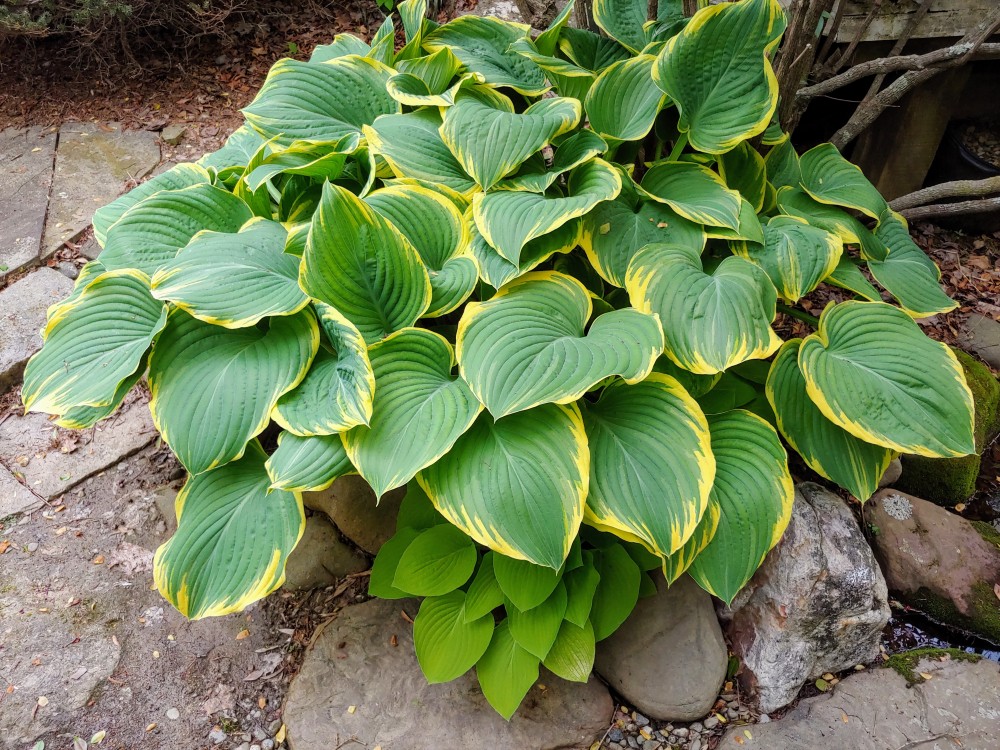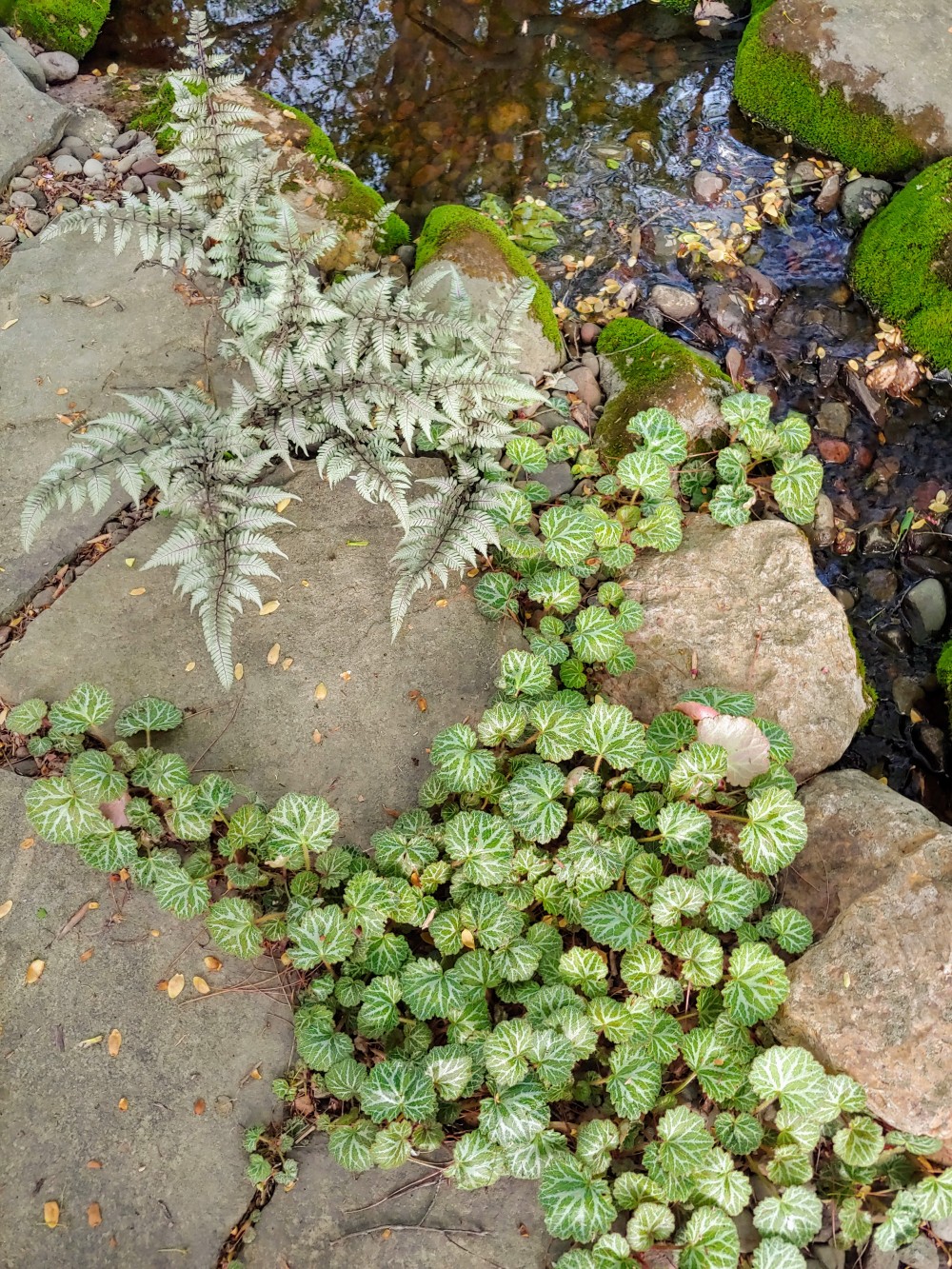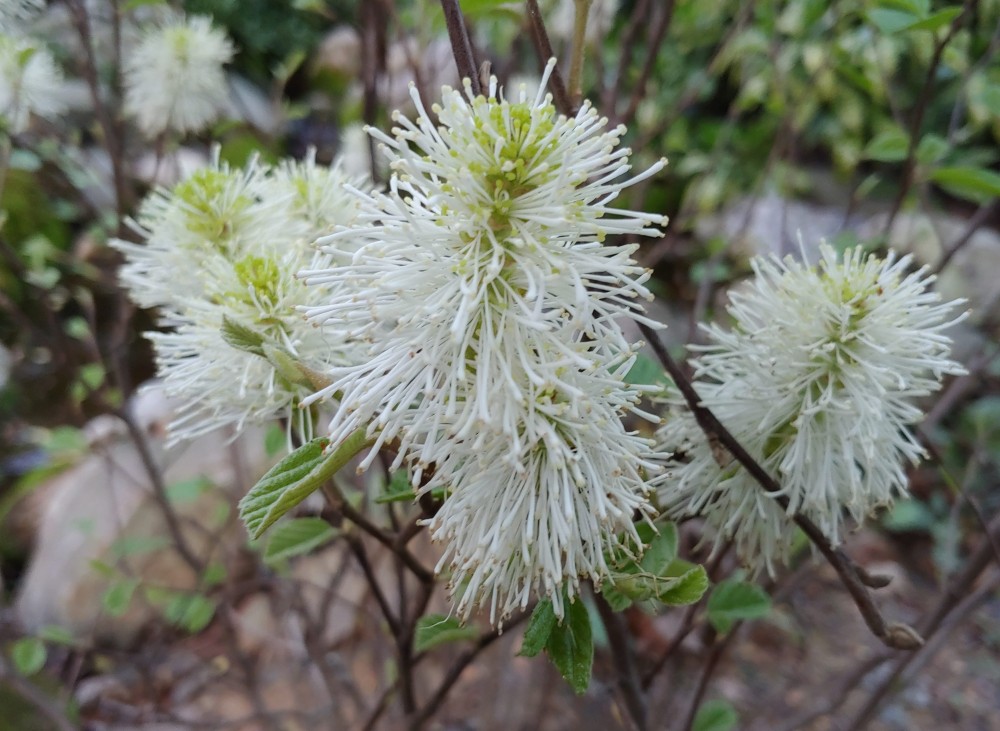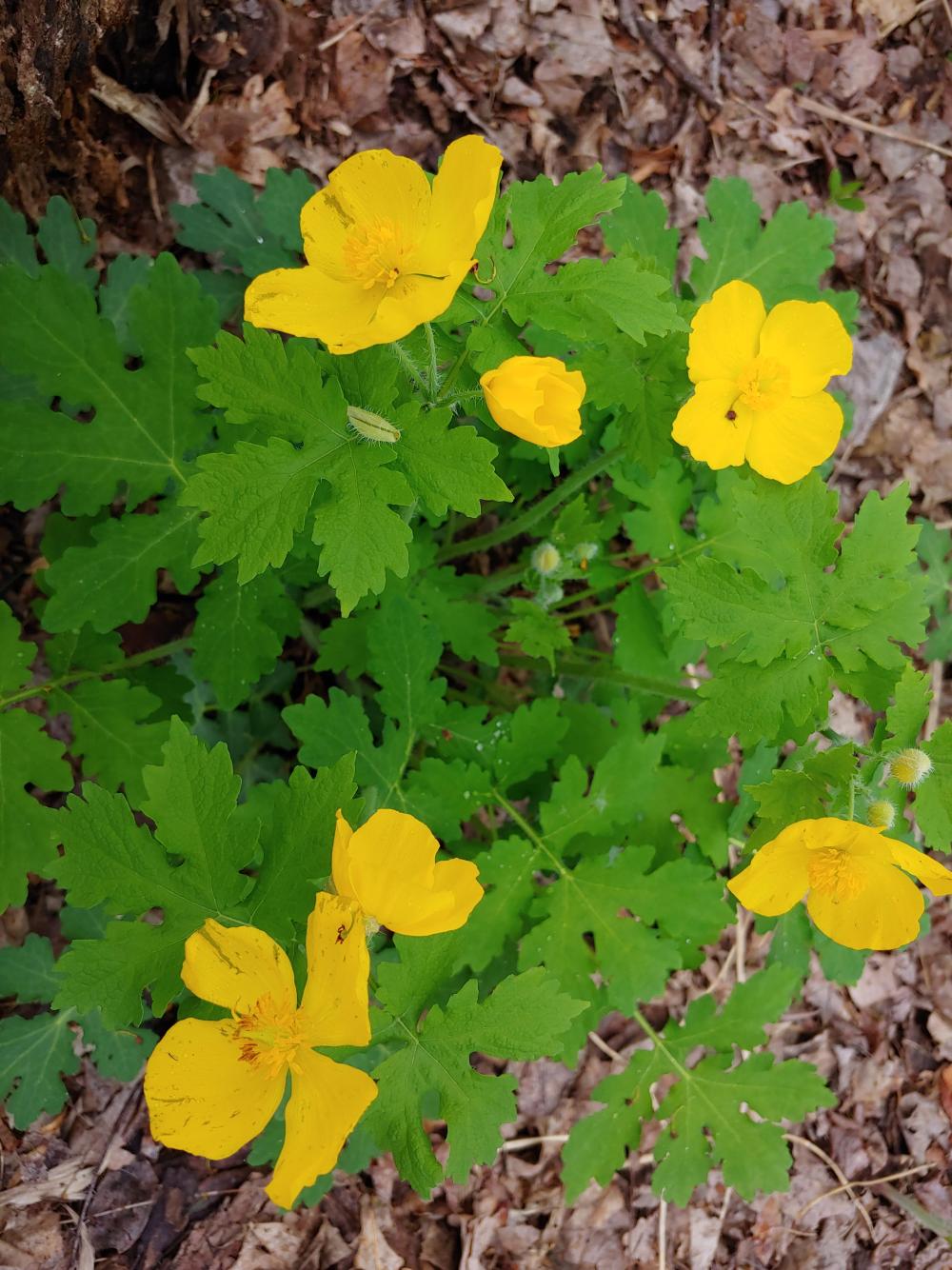The assistant gardener insists the garden is getting out of hand. I agree, and couldn’t be happier.

We, of course, are seeing this from opposing viewpoints. She requires control, and I encourage wildness. A robust hosta has grown to cover another, a fine yellow leafed hosta of moderate size (below). Once, these were layered appropriately, but the larger hosta has discovered unusual vigor this spring. Leaves seem larger, stems longer, and certainly something must be done. Someday.
As we stroll together on this superb April afternoon, she cautions that sporelings of Japanese Painted ferns (Athyrium niponicum var. pictum) encroach too far onto the path. No further, she warns. Creeping saxifrage follows the crack between path stones, and she grumbles. I am overjoyed. A single saxifrage was planted on the far side of the stream, where it survives, but clearly lacks the vigor of seedlings on the near side in brighter shade. I cannot possibly object to nature deciding that one place is better than the other.
Along the stream, I think I’ve finally sited a fothergilla in ideal conditions. Several scattered in varying degrees of sun and shade survive, but none thrive. But, this one has flourished, and now it flowers abundantly, though I am uncertain now if this is the hybrid ‘Mt. Airy’, or Fothergilla gardenii(below). I am horrible at keeping up with the details.
While Painted and Ostrich ferns have nearly reached mature size, others are just starting growth. Every day, there is something that emerges through the thick cover of leaves. If the garden is too wild today, just wait.


While I try to instill order and refinement into the forests in the Santa Cruz Mountains, my colleague down south tries to fit a forest into his small urban parcel in Mid City Los Angeles. I plant fruit trees in a grid pattern, and cut straight trails into the hillsides. He strives for natural curves. I set the living space back away from the noise of the creek at the bottom of the parcel. He adds water features for the sound of the water. It is all so backward.
I wonder which of the two is backward.
I don’t. He is obviously backward.